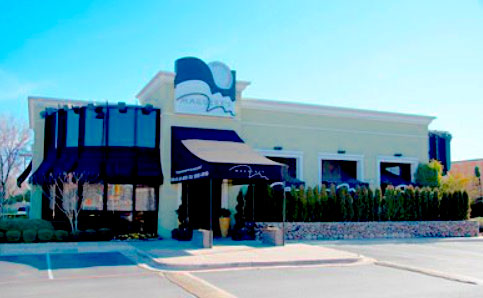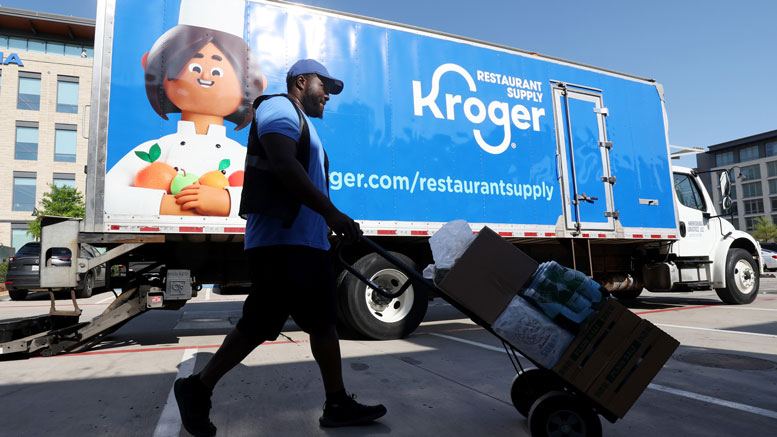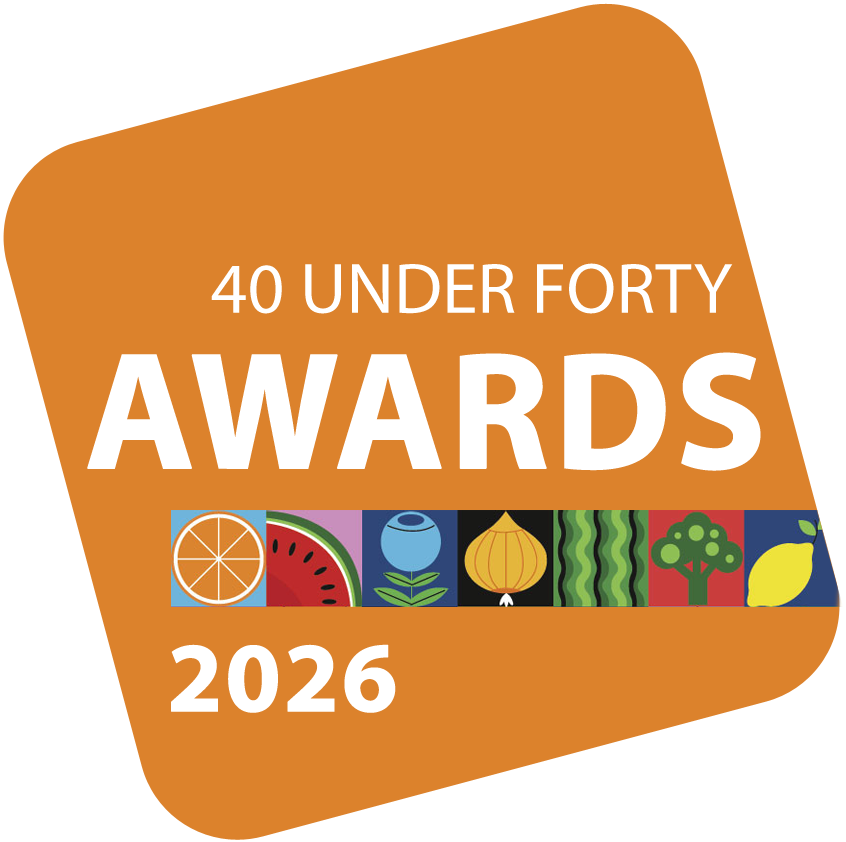Tradition is Strong in the Lone Star State
September 28, 2022 | 11 min to read
In the Dallas-Fort Worth region, supermarkets thrive amidst challenges like labor shortages and rising food prices, with a strong consumer preference for local and seasonal produce. Retailers such as Kroger and H-E-B expand aggressively, enhancing their delivery systems and launching innovative services like the Kroger Restaurant Supply. Meanwhile, the foodservice sector recovers post-pandemic, demonstrating adaptability in menu offerings, yet faces fierce labor competition. Overall, local foods are embraced as a vital trend promoting community support.

Supermarkets booming, foodservice regrouping in Dallas-Fort Worth region.
Originally printed in the September 2022 issue of Produce Business.
Opportunity exists in the Dallas/Fort Worth metroplex, which has been growing rapidly over the last few years. But the growth has not been without complications, such as a scarcity of labor in food-related businesses, and higher grocery and produce prices are taxing consumers. In balance, though, the population growth has given the food business a lift.

Even with change, tradition is strong in Dallas and manifests in a marked preference for local and Texas produce.
Tommy Melton, director of produce operations, GE Foodland, Dallas, says the Texas Department of Agriculture’s promotion of food products produced in the state helps buoy locally grown produce.
“The Go Texan group is always putting in ads and letting people know that they’re helping Texas by buying Texas,” he says.
Yet, he points out Dallas consumers tend to want freshness and that manifests both in terms of desire for local and seasonal produce, even in commodities such as mangos that are not extensively cultivated in Texas.

Produce business director Joseph Bunting of United Supermarkets, Lubbock, TX, says his company, which serves north Texas, sees demand for locally grown and even holds a local expo every year to highlight local products, which also are backed up by signage and a “Texas Grown” logo in advertising.
Due to agricultural conditions, crops in Texas tend to come from different parts of the state at different, limited times, so sourcing has to be broad and can’t be strictly limited to what the state provides. Still, in Dallas, and in Texas in general, consumers favor local produce and will favor in-season fruits and vegetables cultivated nearby even if the seasons are short, says Tommy Wilkins, director of sales, Grow Farm Texas, Donna, TX, which handles local crops and also those from further afield.
“Texans are extremely proud people and love anything grown in Texas,” he says, adding Dallas consumers eagerly await crops that have a brief run, then buy with enthusiasm when they are ready. “At retail, they really try to emphasize that it’s Texas grown,” he says.
SHOPPERS WANT IT FRESH
At the edge of the Dallas/Fort Worth metroplex, Scott Anderson, of Echo Springs Blueberry Farm, reiterates Wilkins’ sentiment about local and Texas produce. Echo Springs is the largest blueberry farm in Texas, he says, and local and seasonal produce have special appeal for people across the state. His berry season starts in June with blueberries, and blackberries come in later. Despite the blackberry season being, in essence, three and a half weeks long, he says consumers wait on it and buy and keep buying until the short season closes.
Despite the Texas heat, his U-pick and retail sales keep going strong, with consumers driving out to gather their own fruit and even purchasing in 10-, 20- and 30-pound boxes as well as smaller clamshells. “People seek us out whether they pick or buy,” Anderson says. “Our products are not from Mexico or California.”

Anderson says the relationship is strong between local and the shopper, and that relationship may even have gotten stronger in the pandemic.
Fresh cuts are also hot in the region’s supermarkets, Wilkins says, with consumers purchasing less because of disease concerns and more to simplify meal preparation. He’s seen cut fruit being promoted, in one example, at three tubs for $10. He’s also seeing more trays of shucked corn in four packs than has been the case in the past.
“It’s a great presentation,” he says. “But I think it’s all because it’s easy.”
Wilkins expects, with the retail turn to more pickup and delivery sales, that packaged produce is going to get more consideration.
GE Foodland’s Melton says Dallas consumers demand local and Texas produce, but also prefer in-season fruits and vegetables even beyond state boundaries. Still, whether it’s a commodity such as black cherries with limited availability or a more massively produced commodity such as watermelon, shoppers want peak of freshness, he asserts.

Wilkins says major supermarket chains operating in Dallas, including Kroger, Albert-son’s and H-E-B, have all been adding new stores and operations. Kroger has been especially active. Among other things, the Cincinnati, OH-based supermarket chain has opened one of its Ocado robotic warehouses in the metroplex, where it acts as the hub of the company’s new-generation delivery system. Wilkins notes that all of the big supermarket players are investing more resources in pickup and delivery.
FOODSERVICE PICKING UP
Although the COVID-19 pandemic delivered a heavy blow, Dave Kirkland, general manager of DeMare Fresh’s distribution center in Dallas-Fort Worth, says foodservice in the metroplex has been on the mend.
“We’ve been looking at foodservice from the standpoint of: When are we going to realize pre-COVID numbers? That’s one of the points of analysis I look at daily. We’re now just comping against 2019 numbers,” he says.
Still, Kirkland adds, when contrasting with last year, it’s important to recognize every-thing costs more in 2022. “It’s been a roller coaster ride over the past two years,” Kirkland says. “With the situation as it is, you’ve got to wonder, what is going to break next? We’re sailing in uncharted waters. You almost have to discount the past two years of data.”
Emily Williams Knight, president and chief executive, Texas Restaurant Association, says the Dallas restaurant scene is dynamic, driven in part by population growth, but also by consumers who are increasingly conscious of how they eat. As such, she says, demand has increased for dishes that don’t have a traditional protein component. Whether focused on fruits and vegetables or plant-based substitutes, meatless dishes are part of two pronounced trends in the Dallas market.

“The demand for local and healthy developed further in the pandemic,” she says. “So, we’ve seen alternatives to beef, but also seafood and chicken. All those have been emerging as wellness has become more important; and vegetarian as well.”
In contrast, she says, vegan restaurant growth seems to have fallen off, which suggests that the trend for more veggie-focused eating may emerge more from general wellness considerations than from lifestyle or broader social concerns.
At the same time, Knight says that a substantial proportion of new arrivals in Texas are from outside the United States, which means that more and various ethnic restaurants, particularly East Asian and Indian, have opened.
Kirkland says many immigrants, and those from India especially, tend to migrate to the same communities, such as in the Frisco area of North Dallas, and entrepreneurs have been opening stores and restaurants, to serve their neighbors. The trend has led to a proliferation of Indian restaurants.
Mark Maguire, co-owner and managing partner of Maguire’s North Dallas, which positions itself as a casual gourmet restaurant, says flexibility, adaptation and creativity are critical in Dallas-area foodservice.
“Chefs are challenged now more than ever to maintain creativity, acknowledge guests’ healthy eating/dietary demands and balance costs and availability,” he says. “There is no doubt a measurable increase in demand for fresh, local and health-conscious, and produce has always been a great way to address a lot of those items. But we are seeing fairly major fluctuations in price and availability in the produce market, so it’s very difficult to commit to any longer-term strategy.”
Maguire’s has adapted to constantly changing economic circumstances. “Every day is different,” Maguire says, adding it is “very difficult to manage with any foresight or even short-term strategy. We have to adjust menu items, prices and operating hours almost on a daily basis.”

The support of the metroplex restaurant patrons has been critical, Maguire says.
“This is probably the most encouraging thing we have seen,” he says. “Our guests are exceptionally supportive. I cannot count the number of regulars who have told me ‘Mark, you need to raise your prices. Don’t worry, we will support you!’ This is definitely the over-riding sentiment. We still get the occasional curmudgeon who complains about waiting too long to be seated, price increases or menu changes, but it is definitely the exception.”
Even while change occurs, foodservice in Texas has its stalwarts. At distributor Taxco Produce, Dallas, buyer R.J. Roll says a good portion of the Dallas restaurant scene tends to be traditional, including the Mexican restaurant sector that is the company’s focus.
And even as Taxco and its customers are dealing with higher food costs, Roll says restaurants seem to be holding their own. “I haven’t seen any alarming trends,” he says.
In its restaurant business, Kirkland says DiMare is working with clients, “each a little differently,” he says, “but overall they’re not going into value-added, but mostly bulk.”
Wilkins says with the dynamic population growth boosting the economy, Dallas foodservice operators have a problem that’s familiar to restaurateurs in other parts of the country: competition for workers is fierce.
“The big impact has been the shortage of labor. There’s not enough staff to service the restaurants. We’re extremely short of labor,” he says.
Maguire says foodservice operators are making the necessary moves. “Many restaurants are thriving right now, in spite of the massive increase in COG and labor shortages,” he says. “Trends I am seeing with peers are menu item reductions/smaller menus; menus on QR codes, which affords a higher level of nimbleness with regards to changing prices or editing menu items; creating ‘chef specials’ using ingredients that are more readily available and less cost fluctuation.”
Texas Restaurant Association’s Knight says some restaurants have developed specifically designed “inflation relief ” menus to draw consumers during less busy hours, which helps make the days open more profitable. They also have been looking at more ways to do delivery and have even developed their own subscription food box programs that provide the ingredients consumers need to prepare and eat meals at home. They’re doing so at a time when some distributors are raising minimum orders, which is impacting smaller restaurants and prompting them to try new things to remain viable.
Texas produce is virtually a requirement in better restaurants, which sometimes promote it directly on the menu.
“There is a local following,” says James Wilson, vice president of operations, DiMare Fresh, Fort Worth, “I don’t know if it’s as popular a trend as it was 10 years ago. They are marketing it differently. With freight costs today, it’s not so much about field to fork as it is trying to mitigate the costs where possible.”
• • •
DALLAS-FORT WORTH MARKET A COMPETITIVE ONE
Major retailers Kroger, Albertsons and H-E-B all are making significant moves in the Dallas-Fort Worth metroplex.
Kroger, for one, has placed an Ocado robotic warehouse in the market as it rolls out its tech-enabled delivery system across the United States. Still, the Ocado delivery initiative in the market is not Kroger’s only innovative approach to business. The Cincinnati, OH-based company’s Dallas division launched Kroger Restaurant Supply exclusively in the market this spring. Kroger positioned the service as an alternative for foodservice operators who otherwise would have to order in large quantities at variable pricing for deliveries on a set schedule.
As it launched the service, the company characterized Kroger Restaurant Supply as offering competitive wholesale pricing, opportunities to purchase items by the case or unit and seven-day-a-week delivery.
“Like our resident shoppers, we know our commercial customers want options and solutions that offer fresh food, consistent pricing and reliability,” says Keith Shoemaker, president, Kroger Dallas division.
Kroger also has partnered with Kitchen United MIX, which has developed a virtual food court concept, to launch a multi-restaurant pickup operation at its supermarket on East Mockingbird Lane in Dallas. The newest is the third Kitchen United MIX operation that Kroger has opened, but the first in Dallas. Another Kitchen United MIX location operates independently in nearby Frisco, TX.
In the Kitchen United concept, consumers can mix and match items from various restaurants in one order for pickup or delivery. Restaurants involved can be national, regional or local.
“When our customers think of food, they think of Kroger,” says Dan De La Rosa, Kroger Group vice president of fresh merchandising. “The Kitchen United collaboration provides the fresh, on-demand meals our customers crave. It is one more innovative example of how Kroger is fulfilling its commitment to anything, anywhere, anytime.”
Shoemaker added, “We are always looking for new and unique ways to help our customers answer the ‘What’s for dinner tonight?’ question. The collaboration with Kitchen United is special because customers’ restaurant-quality meals will be crafted while they’re shopping for the fresh food and pantry staples their families need.”
Tommy Wilkins, director of sales, Grow Farm Texas, Donna, TX, says the supermarket business in Dallas is getting more competitive. Earlier this year, Albertsons, Boise, ID, announced it was opening in the Dallas suburb of Irving after a long absence. An Albertsons spokesperson said the company didn’t have an opening date for the store but would provide more information on the debut in the fall.
The big national supermarket chains aren’t alone in boosting their presence in the DFW Metroplex. During 2021, H-E-B, headquartered in San Antonio, TX, announced plans to open stores in Dallas suburbs Frisco and Plano, both slated to begin operating later this year. H-E-B also broke ground on a store in McKinney, in the same general area north of Dallas proper. Then on May 25, H-E-B officially started construction on a new 117,000-square-foot store in Allen, a suburban city that sits between Plano and McKinney just east of Frisco. The four towns aren’t just in the same vicinity, they are also all in the same county.

